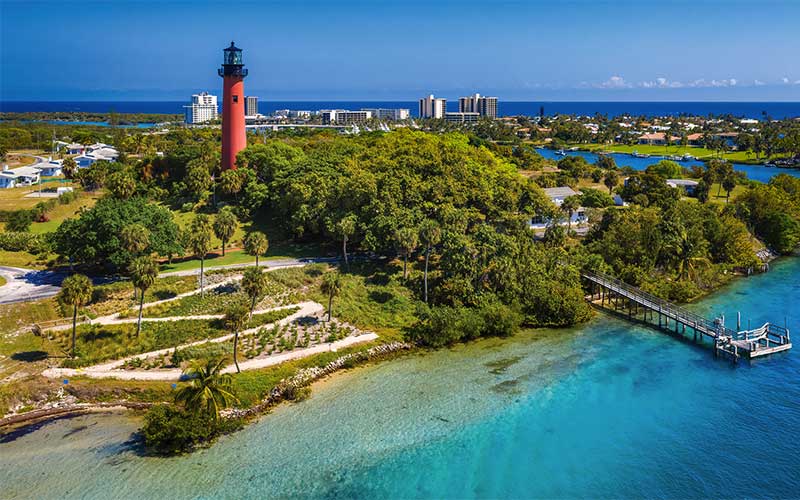On July 10th, Jupiter Inlet Lighthouse & Museum celebrates the anniversary of the its first lighting on July 10, 1860. Congratulations to Jupiter Lighthouse for 162 years as one of Florida’s most iconic structures!
Here’s some history:
An impressive point of land sits at the junction of the Indian River and Jupiter Inlet and for thousands of years had been a meeting place for ancient Indian tribes. This strategic site did not go unnoticed by army surveyors who in 1849 recommended the Jupiter Inlet area as a suitable place for military defenses. President Franklin Pierce signed the order to set aside a 61 & ½-acre site on the Fort Jupiter Reservation for a lighthouse in 1854.
Lt. George Meade, later the Union General at Gettysburg, created the elegant design for the Jupiter Light, later improved by Lt. Raynolds, his successor, to include a double-walled tower design. After repeated challenges, Captain Edward A. Yorke sailed from Philadelphia with a ship filled with supplies, arriving on December 31, 1859. Yorke completed the Jupiter Inlet Lighthouse and it’s Oil House in May of 1860 and the Jupiter Light went into service July 10, 1860. The tower has survived the civil war, hurricanes, and earth tremors.
From the first efforts to construct a Lighthouse at Jupiter Inlet, the builders and keepers faced extreme challenges. Stories of their resourcefulness and mastery completing the tower and keeping its innovative First Order Fresnel Lens lit through adversity continue to inspire today. Much of this earlier Lighthouse history is on display at the Jupiter Inlet Lighthouse & Museum in the Modica Family and the Joe Namath Foundation supported Keeper’s Workshop exhibit.
Interesting details:
- Construction: Brick, double masonry walls, outer conical, tapering from 31.5” (8 bricks thick) at ground to 18 inches (3 bricks thick) at base of lantern. Inner wall cylindrical and 2 bricks thick throughout. Circumference at base is about 65’ and at top about 43’.
- Height: 156’ – 108’ tower on a 48’ hill, natural parabolic dune top with a layer of shell.
- Optic: First order Fresnel lens, manufactured in Paris by Henry-Lepaute and reputed to be the oldest existing first order Fresnel lens in Florida. Of the six regular orders of lenses, the first is the most powerful.
- Range: 24 miles. This is the distance that the light can be seen on a ship at sea. To someone in an airplane, the light would be visible 40-50 miles away.
- Electrified: 1928. A 1/3 horsepower motor turns the lens carriage.
- Automated: June 8, 1987. A photoelectric cell turns the bulb and motor on when the sun sets and off when the sun rises.
- Daymark: Red with black lantern. Coastal lighthouses have different markings to enable ships to determine their location during daylight.
For more info and a discount, visit their page.

